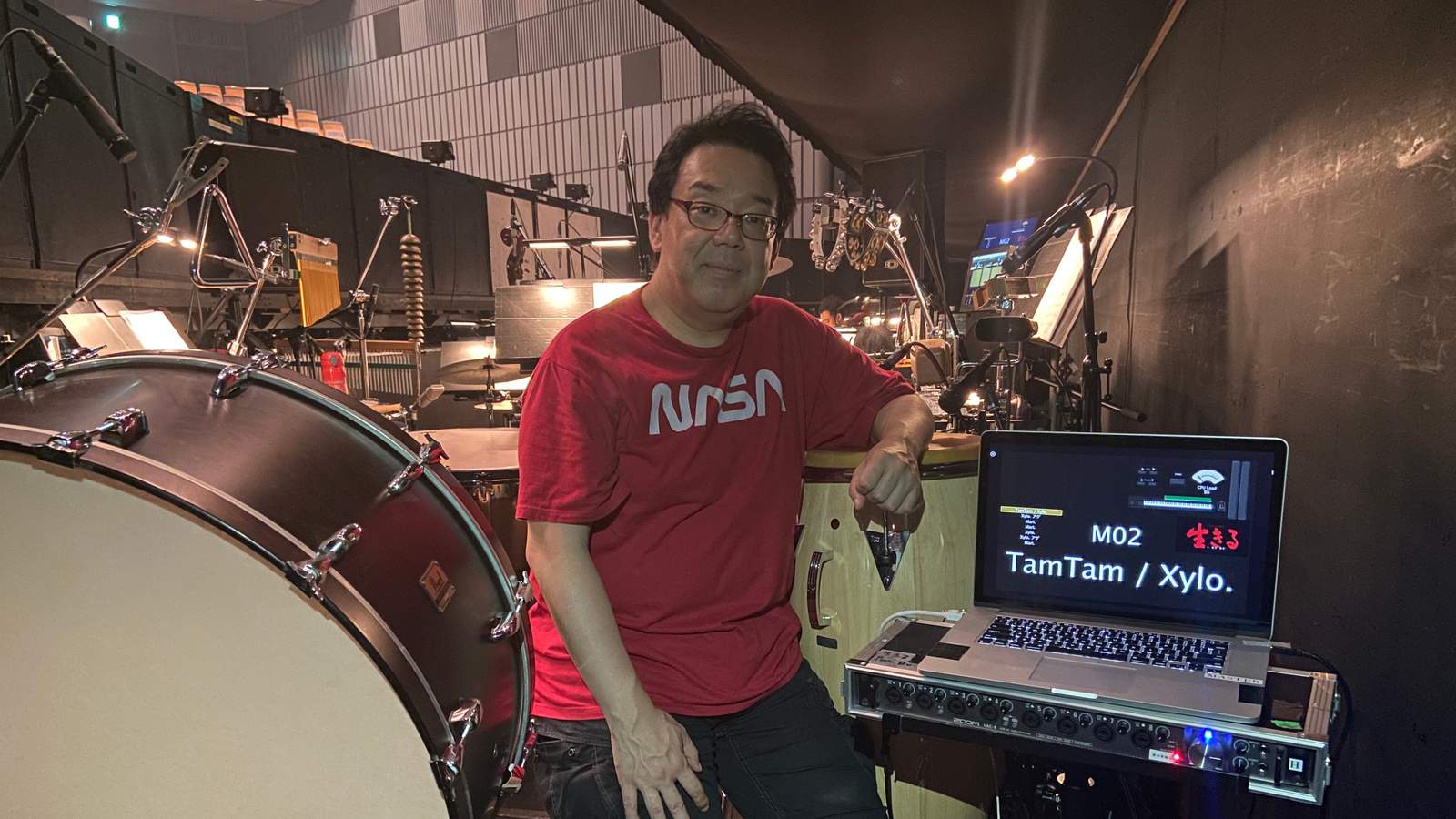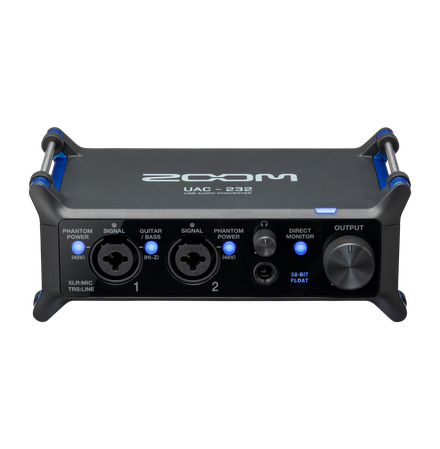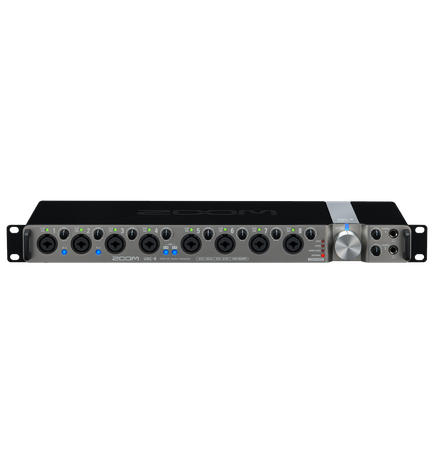In ZOOM CREATORS articles, we cover various creators who have relationships with ZOOM.
This time, we had Hiro Iida, who is active as an electronic music designer for Broadway musicals in New York, converse with S, a ZOOM developer. We asked about the unfamiliar world of an electronic music designer and the use of ZOOM audio interfaces.

Electronic music designer Hiro Iida
What is an electronic music designer for a musical?
Interviewer: First of all, Hiro, please tell us about your profession as an electronic music designer.
Hiro: In my case, my field is the world of New York Broadway musicals. My work is primarily keyboard parts in the orchestra of those musicals. I also handle playback, for example. In addition, I handle system design and sound design for electronic music, as well as guiding performances and preparing arrangements. I am sometimes also involved in the music team and sometimes in the sound team. This could be because they are musicals, but I do design that includes parts that are extremely musical and parts that are technical.
Interviewer: Speaking of musical and technical design, what kinds of things do you do specifically?
Hiro: What I do is not using keyboards to figure out how to play trumpets and violins, for example, or how to arrange wind instruments. Rather, I do things like think about how to use Ableton playback tracks and how to design and play sounds with keyboards. So, equipment setup also becomes involved. What kind of equipment do I select? After selecting it, how do I make sounds based on orchestra scores? I even give performance instructions to the performers about how to play this equipment on site. For these reasons, I am doing comprehensive design.
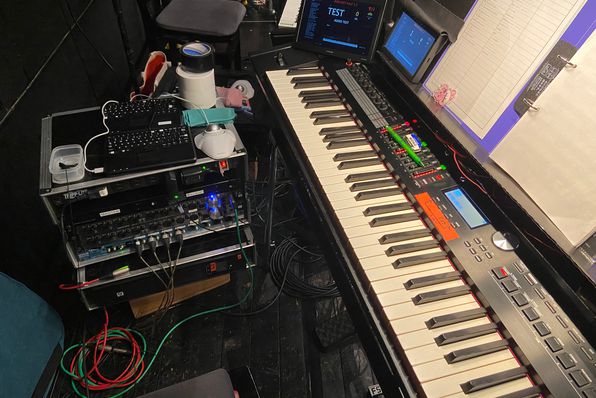
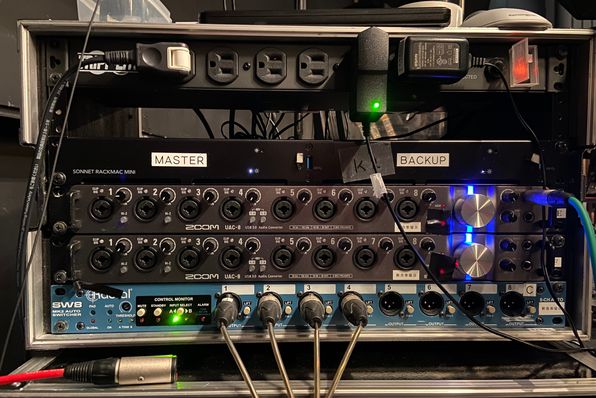

Live performance required by musicals
Live performances with electronic music
Interviewer: So, you are selecting equipment to produce your sounds on site and instructing performers on how to play them especially because they are live performances for musicals.
Hiro: That’s right. In the case of the musical Ikiru, which is being performed in Japan, the string section actually only has a violin and a cello. For the rest, we have to cover the stringed instrument section with just three people, including keyboards. So, for example, we might have the violin and cello play for just the first few seconds but then quickly add keyboards and have the keyboards handle the melody from then on until at the very end only the strings remain again.
S: So that is how it is! Actually, I was allowed to attend the dress rehearsal of this musical Ikiru. Even though I listened conscious of your sound creation, it was extremely natural and I could not tell where it switched to synthesizers…
Hiro: To the extent that is transparent the work is good. If the level is so that the audience and others, even the players themselves listening afterward on headphones, cannot tell who is playing that is a success for me (laughs).
S: If you do it that well, we cannot hear the difference (laughs).
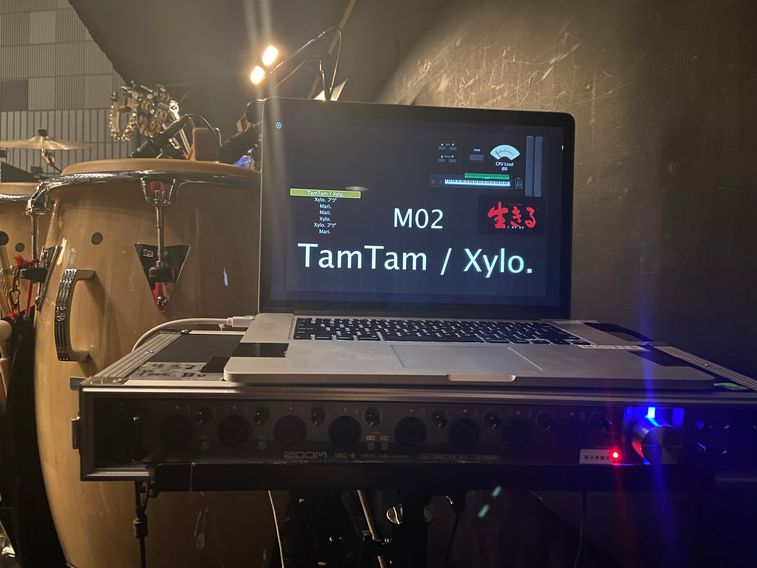
As many as 40 patterns for strings (stringed instrument sounds) have been prepared to go with the performance
Designing sound together with the performance
Hiro: In addition to performances that are layered with existing sounds like this, sometimes I create new sounds that work with the intention of the performance. In the second half of the musical Ikiru, in a scene with a change of location, there is a notable bell sound. For that, just “bell” was written in the score, but saying “bell,” there are many types of bells, aren’t there? This time, I received a request from the director Amon Miyamoto to make “a sound that, even though it is connected to a Japanese funeral scene in 1952, is not a temple bell and is not a church bell, does not feel religious and expresses that human life ends suddenly and unpoetically.”
S: That is a difficult order.
Hiro: Yes, it is. Since it is that kind of sound creation, it cannot be written in a score, and I receive ideas and requests from the director, so I have to think about how to create the sounds.
S: So, how are you making those sounds?
Hiro: Well, I significantly lowered the pitch of sampled tubular bells, for example, and cut overtones so that there would not be strange ones since the music has a key. Then, I lowered the tuning of samples of this. After that, I mixed various things, for example, adding the attack of a gran cassa bass drum and lowering its pitch by about an octave…
S: Wow, that much!
Hiro: Yes. Since there are about five sound layers after that, during shows I played so that it changes with the velocity (keyboard playing strength).
S: So, the bell performance was also played live on a keyboard!?
Hiro: Yes. That is a live keyboard performance. In fact, that sound comes out of a ZOOM UAC-8 (laughs). Following the conductor’s cues, the keyboard starts playing all of sudden.
S: Really! I am surprised that is a live performance! Is the instrument for the bell part just a keyboard?
Hiro: It is just a keyboard. With velocity, slowly, little by little, the sense of attack disappears, but the large extremely dark part of the sound, like temple bells on New Year’s Eve, has low velocity sensitivity, so it does not change much and continues to remain. The final 2–3 soundings have a peaceful atmosphere and momentarily connect to the funeral. That is my intent. This is a performance suitable for a musical. The lighting changes and the audience waits with a single sound as the show proceeds to the next transition without the curtain coming down.
S: I see. I understand the importance of the sound performance.
Hiro: I make the sounds with requests like that from the team of performers directors, but for the music composer and the arranger, it is just “play bells with a keyboard here” and all that is written is “bell, dong dong dong” so while looking at that, the conductor just directs me to play “dong dong dong” and leaves the rest to me (laughs). In other parts as well, I deciphered the intentions of sounds in the score and created each of them. So, I prepared about 40 patterns for strings (stringed instrument tones). While providing precise instruction about how to play them, I keep adjusting the sounds finally when listening to them in the theater.
S: Listening to your explanation, rather than my original image of the word “electronic,” I am getting a strong image of a person who completes the orchestra of a musical with synthesizers.
Hiro: That might be the right kind of image. The space to perform in the orchestra pit has become smaller than it used to be. As a result, we have to perform with limited instruments, so various sounds are required for my work.

The UAC Series and Hiro’s personal UAC-8
Why ZOOM audio interfaces are good for performances of musicals
Interviewer: Was the first ZOOM product that you started to use the UAC-8?
Hiro: That’s right. I do not remember who recommended it to me, but the first thing that I heard about it was that the latency was really low and it was easy to use, which I thought sounded good, so I ordered one. Then as I started to use it, I opened it all up and checked how it was built and confirmed whether I could take it on tour.
S: You opened it up and checked it out (laughs).
Hiro: Also, in terms of functionality, some things I liked were that multiple outputs can be combined to one and that everything necessary is included in the MixEfx mixer app. Evaluated comprehensively, including the latency, strength of the body and the price, I decided I should go with ZOOM.
S: I am a little relieved to hear you say that. It is great that you selected our product in this way.
Hiro: In fact, when I first started using it there was surprise among the American team that ZOOM was producing audio interfaces. But, I keep using it without any problems. Actually, everyone is surprised. Among the various audio interfaces I have selected, no problems have occurred with ZOOM. They always start up and they do not break even when I take them on tour.
S: That makes me happy. Well, I also feel some pressure, but… (laughs).
Hiro: (Laughs.) Another thing is, as expected, probably latency. This is because with real-time performances, people are picky about latency, especially piano players and the like. That is an important point when making a selection. When that kind of specific point is superior, I thought I could just go all in with ZOOM.
S: You did in fact purchase over 50 UAC-8 units.
Hiro: Yes. I think at that time I might have bought almost every one that was available in New York (laughs). With a tour production, including rehearsal units, we carry along a total of 22. With that many, music shops did not have enough so we got them by working directly with ZOOM.
S: I see. I first began communicating with you after an introduction from ZOOM North America. So, that was how it began. Now that we have direct communication, requests from you, the person who uses it the most, are really helpful.
Interviewer: Thank you very much for talking with us today about examples of use in your work. We hope you will continue to choose ZOOM audio interfaces!

UAC-8 in the orchestra pit of the musical Ikiru
“We are lucky that we are allowed to be involved in new shows on Broadway every time. ZOOM audio interfaces help me out because I am able to use them flexibly when making original works with various production scales and conditions. They can reliably cover various situations.”

